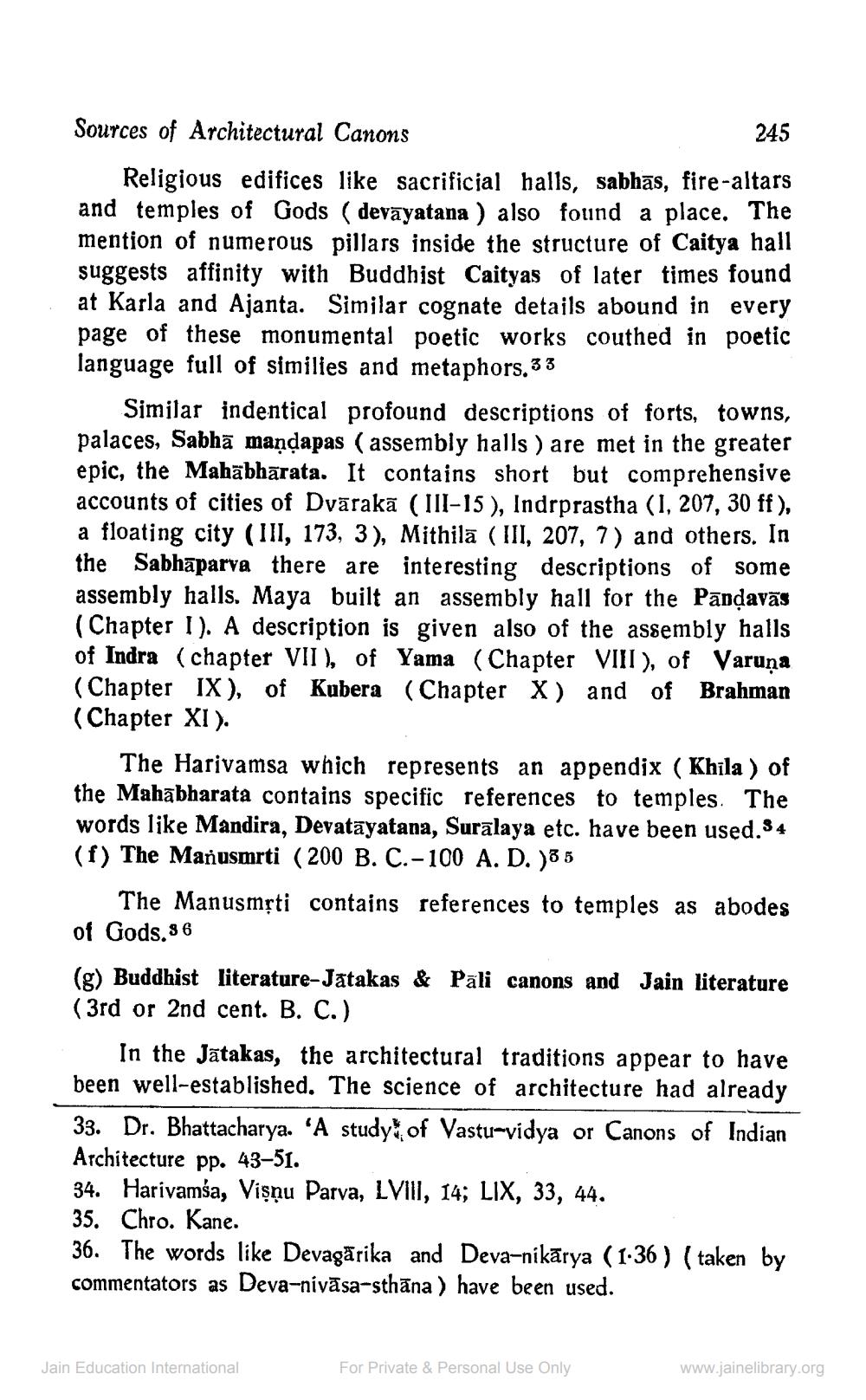________________
Sources of Architectural Canons
245 Religious edifices like sacrificial halls, sabhās, fire-altars and temples of Gods (devāyatana ) also found a place. The mention of numerous pillars inside the structure of Caitya hall suggests affinity with Buddhist Caityas of later times found at Karla and Ajanta. Similar cognate detajls abound in every page of these monumental poetic works couthed in poetic language full of similies and metaphors.33
Similar indentical profound descriptions of forts, towns, palaces, Sabhā maņdapas (assembly halls ) are met in the greater epic, the Mahābhārata. It contains short but comprehensive accounts of cities of Dvārakā (III-15), Indrprastha (I, 207, 30 ff), a floating city (III, 173, 3), Mithilā ( III, 207, 7) and others. In the Sabhāparva there are interesting descriptions of some assembly halls. Maya built an assembly hall for the Pandavās (Chapter 1). A description is given also of the assembly halls of Indra (chapter VII ), of Yama (Chapter VIII), of Varuņa (Chapter IX), of Kubera (Chapter X) and of Brahman (Chapter XI).
The Harivamsa which represents an appendix ( Khila ) of the Mahabharata contains specific references to temples. The words like Mandira, Devatāyatana, Surālaya etc. have been used.94 (f) The Manusmrti (200 B. C.-100 A. D. )35
The Manusmộti contains references to temples as abodes of Gods.86 (g) Buddhist literature-Jatakas & Pāli canons and Jain literature (3rd or 2nd cent. B. C.)
In the Jatakas, the architectural traditions appear to have been well-established. The science of architecture had already 33. Dr. Bhattacharya. 'A study of Vastu-vidya or Canons of Indian Architecture pp. 43–51. 34. Harivamša, Vişņu Parva, LVIII, 14; LIX, 33, 44. 35. Chro. Kane. 36. The words like Devagarika and Deva-nikārya (1.36 ) ( taken by commentators as Deva-niyāsa-sthāna) have been used.
Jain Education International
For Private & Personal Use Only
www.jainelibrary.org




